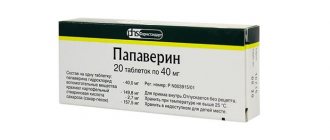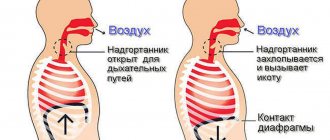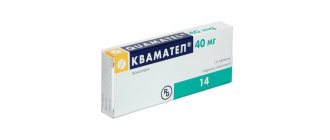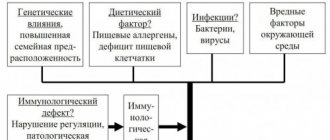Antibiotics: neuropsychiatric effects and psychotropic interactions
"Psychiatric side effects" of antibiotics
Since the advent of antibiotics in the 1930s, there have been numerous reports describing “psychiatric side effects,” ranging from anxiety and panic to major depression, psychosis, and delirium in patients with and without a premorbid psychiatric history. Risk factors included pre-existing psychopathology, comorbidities, slow acetylating status, older age, concomitant medications, and increased permeability of the blood-brain barrier. and high-dose antibiotics and intrathecal or intravenous administration.
Mechanisms of “psychiatric toxicity” of antibiotics
"Psychiatric toxicity" may result from various mechanisms of action, including gamma-aminobutyric acid or pyridoxine antagonism, adverse interactions with alcohol, or inhibition of protein synthesis. The effects of clarithromycin, beta-lactams and fluoroquinolones on the central nervous system are due to their action as a GABA-A antagonist. Antibiotics with dose-dependent activity include: linezolid, which can increase CNS activity through its monoamine oxide (MAO) inhibitory activity; metronidazole, which causes neuropsychiatric side effects with cumulative or above therapeutic levels; and tetracyclines, which are more likely to cause CNS side effects in patients with reduced CYP2C19 activity. Some antibiotics, such as fluoroquinolones, are known to cause CNS effects; therefore, it may be ideal to avoid the use of these agents in this patient population or use them with caution.
The clinical picture becomes even more complex if the patient has a psychiatric disorder with a concomitant allergy to antibiotics or if the pathogen is resistant. This often requires the use of a specific antibiotic, which may be known for its psychiatric side effects. Monitoring, early detection, and discontinuation of treatment will prevent these events from worsening or abating.
Beta-lactams
Beta-lactams include penicillins, cephalosporins, and carbapenems. They are generally considered broad-spectrum antibiotics that can act as GABA-A antagonists in a dose-dependent manner to cause neurotoxicity. The beta-lactam ring is structurally similar to the GABA antagonist bicuculline. CNS effects include seizures, encephalopathy, tremors, hyperactivity, and excitability.
Penicillins
Piperacillin/tazobactam and ampicillin are the penicillins most likely to cause CNS side effects. The effects of continuous infusion of piperacillin/tazobactam were studied and symptoms such as decreased level of consciousness, delayed awakening after cessation of sedation, myoclonus, seizures and hallucinations were found. Piperacillin/tazobactam neurotoxicity usually occurs within seven days, with renal failure being a predisposing factor. Ampicillin neurotoxicity is more common in low birth weight infants who have increased permeability of the blood-brain barrier.
Cephalosporins
Cefepime and ceftazidime are the most common cephalosporins to cause “nonconvulsive” status epilepticus, which manifests as a change in mental status. In critically ill patients, myoclonus and decreased consciousness were the most common symptoms of cefepime-associated neurotoxicity. Renal failure appears to be the greatest risk factor, and discontinuation of cephalosporins results in resolution of symptoms.
Carbapenems
Carbapenems are associated with seizure activity due to GABA-A receptor antagonism. Risk factors for seizure activity include renal failure, older age, history of seizures, and stroke. Ertapenem has been associated with psychosis, with patients experiencing delusions and visual and auditory hallucinations. Ertapenem neurotoxicity may persist for up to 14 days after discontinuation. Meropenem and ertapenem can also cause delirium.
Metronidazole
Metronidazole is used for protozoal infections and bacterial vaginosis. It is also used as an anaerobic blanket for intra-abdominal infections and for toxic megacolon caused by Clostridium difficile. Metronidazole may cause psychosis; This is thought to be the result of inhibition of monoamine oxidase (MAO), an enzyme that catabolizes dopamine. Psychosis usually resolves within 14 days after discontinuation of the drug. Factors contributing to the development of psychosis include concomitant use of disulfiram and supratherapeutic levels of metronidazole. Cumulative exposure to metronidazole is thought to contribute to neurotoxicity. Seizures are associated with cumulative doses greater than 40 grams. Impaired renal or hepatic function are risk factors for supratherapeutic levels and cumulative exposure, thereby increasing the risk of adverse effects.
Other neurotoxic symptoms associated with metronidazole include peripheral neuropathy, paresthesia, ataxia, and encephalopathy. Slow onset myoclonus is a common feature of metronidazole-induced encephalopathy. These side effects may be due to metronidazole metabolites that inhibit the GABA receptor in the vestibular and cerebellar systems.
Macrolides
Macrolides, including clarithromycin, azithromycin, and erythromycin, are used to treat respiratory infections, peptic ulcers caused by Helicobacter pylori, sexually transmitted diseases, and Mycobacterium avium complex. Of all the macrolides, clarithromycin was associated with the most CNS adverse effects.
Neurotoxicity associated with clarithromycin can manifest as mania, delirium, acute psychosis, and even hallucinations. It is also one of the most common triggers of “antibiomania,” referring to antibiotics that can cause mania. Several case reports of clarithromycin-induced psychiatric manifestations in children describe a different clinical picture, with symptoms ranging from hypomania and aggression to insomnia and even hypersomnia. Visual hallucinations have been reported in patients taking clarithromycin for end-stage renal disease.
Although rare, there are case reports of azithromycin causing psychosis, delirium, and hallucinations in elderly patients who do not have an underlying psychiatric disorder.
It is possible that the CNS effects of macrolides are due to GABA-A antagonism due to their ability to induce epileptogenic activity.7 Other theories include drug interactions and accumulation of the active metabolite clarithromycin, since macrolides are CYP3A4 substrates (clarithromycin and erythromycin are also CYP3A4 inhibitors).
It is unclear whether the CNS effects are dose dependent: neurotoxicity has been observed at low doses, and supratherapeutic ranges have not caused CNS side effects. Often when CNS toxicity develops, the patient already has a pre-existing psychiatric disorder that poses a greater risk.
Fluoroquinolones
Fluoroquinolones are one of the most common causes of neuropsychiatric reactions caused by antibiotics. Fluoroquinolones may be more likely to cause delirium and psychosis than previously thought, according to a recent study. As with macrolides, it is suspected that GABA-A antagonism causes proconvulsant activity, leading to adverse CNS effects. Additionally, fluoroquinolones have been reported to affect N-methyl-d-aspartate (NMDA) receptors in vitro, but further research is needed. to fully elucidate its mechanism.
The most common neuropsychiatric side effects of fluoroquinolones are irritating effects, including insomnia, dizziness, headache, nervousness, and restlessness, which usually resolve when these medications are stopped. Fluoroquinolone antibiotics can also cause more serious reactions. They have a black box warning for potentially disabling and irreversible side effects, including CNS damage.
Seizures and status epilepticus may occur due to GABA-A inhibition. Therefore, fluoroquinolones should be used with caution in patients with a history of epilepsy. Encephalopathy, “antibiomania,” delirium, hallucinations, and acute psychosis are among other neurotoxic manifestations associated with fluoroquinolones.
Research suggests that nonsteroidal anti-inflammatory drugs (NSAIDs) increase the risk of neurotoxicity when used concomitantly with fluoroquinolones. A single-center retrospective study of 631 hospitalized veterans treated with a fluoroquinolone for at least 48 hours found that FQ-induced delirium or psychosis was more common in older patients and in those prescribed first-generation antipsychotics. Caution should be exercised when prescribing fluoroquinolones to this group of patients.
Oxazalidones
Linezolid and tedizolid belong to the oxazolidinone class of antibiotics. These antibiotics are used for infections caused by vancomycin-resistant Enterococcus and methicillin-resistant Staphylococcus aureus. Infections of the skin and skin structures, as well as pneumonia, are common indications for the prescription of oxazolidinone antibiotics.
Linezolid exerts its effect on the central nervous system by inhibiting MAO, an enzyme responsible for the metabolism of monoamine neurotransmitters (dopamine, norepinephrine and serotonin). Foods rich in tyramine and concomitant use with other serotonergic drugs may increase the risk of hypertensive crises and serotonin syndrome. However, the significance of this interaction has been questioned due to the low affinity of linezolid for MAO and the subsequent low degree of MAO inhibition.
There are limited neuropsychiatric data on tedizolid, but in vitro testing has shown that tedizolid reversibly inhibits MAO enzymes, similar to linezolid. Therefore, similar precautions are recommended for tedizolid.
Linezolid has also been associated with peripheral and optic neuropathy and vision loss in adults and children. This adverse reaction appears to primarily occur during long courses of therapy (i.e., more than 28 days). Peripheral neuropathy appears to be the most common and may be permanent. Optic neuropathy usually improves or resolves completely after discontinuation of linezolid, although it may sometimes be permanent.
The mechanism of neuropathy is thought to be related to inhibition of protein synthesis and subsequent mitochondrial damage, in addition to its ability to enter the central nervous system. Several reviews have suggested that risk factors for linezolid-associated neuropathy include pre-existing neurological disease, alcohol abuse, diabetes, chemotherapy and antiviral therapy.
Nitrofurans
Nitrofurantoin is used to treat and prevent cystitis. This antibiotic has been associated with peripheral neuropathy. Although the association of nitrofurantoin with peripheral neuropathy is rare, the risk appears to be increased in patients with anemia, renal impairment (CrCl <60 mL/m), diabetes mellitus, vitamin B deficiency, debilitating disease, or electrolyte imbalance. The onset of neuropathy is also independent of dose and duration.
The exact mechanism of nitrofurantoin-associated neuropathy is unknown; however, it may be due to axonal loss. A review of the literature showed that neuropathy developed mainly in patients with impaired renal function, marked by uremia. The combination of uremia and serum nitrofurantoin accumulation may potentially contribute to the development of neuropathy. Caution should be exercised when using nitrofurantoin in patients with these conditions.
Sulfonamides
Sulfamethoxazole-trimethoprim is a sulfonamide antibiotic that affects the synthesis of folic acid. It has gram-negative and positive activity and is approved for the treatment of a variety of infections, including skin structures, urinary tract and some respiratory tract infections.
The psychiatric effects of sulfamethoxazole-trimethoprim are well documented, with reports dating back to 1942. Initially, most psychiatric symptoms were associated with the use of sulfamethoxazole-trimethoprim to treat urinary tract infections. However, immunocompromised patients are at increased risk of acute psychosis. Geriatric patients are also at increased risk of neuropsychiatric effects, particularly hallucinations and psychosis, which is likely associated with an increased risk of renal failure.
Other neuropsychiatric effects include neurotoxicity, hallucinations, depression, apathy, nervousness and other general psychotic symptoms. Sulfonamide antibiotics have the ability to cross the blood-brain barrier, which may be the reason for the development of such effects. Deficiencies of glutathione and tetrahydrobiopterin have also been postulated. Additionally, episodes of aseptic eosinophilic meningitis have been described, possibly due to a type 1 hypersensitivity reaction.
There appears to be a temporal relationship, with neuropsychiatric symptoms often developing between 3 and 10 days after initiation of therapy. The effects are dose dependent and disappear after discontinuation of therapy. Reducing the infusion rate or switching from intravenous to oral therapy has been shown to reduce the risk or improve neuropsychiatric effects.
Tetracyclines
Tetracycline antibiotics, including doxycycline and minocycline, are approved for the treatment of respiratory infections, skin and soft tissue infections, and some tick-borne diseases. Although there are some reports that tetracycline antibiotics, particularly doxycycline, may have beneficial neuropsychiatric effects, most of the literature regarding tetracyclines does not support this.
Most of the literature on neuropsychiatric effects focuses on minocycline. Effects include vestibular symptoms such as tinnitus, blurred vision, dizziness, and loss of balance. The mechanism of minocycline injury was initially thought to be related to changes in fluid volume and ion concentration secondary to its osmotic activity. Females and older adults are at increased risk of developing these symptoms, likely due to higher serum concentrations as a result of minocycline's smaller body size and lipophilic nature.
Other neuropsychiatric side effects of tetracyclines vary in severity, with the most severe resulting in suicide. The proposed mechanism of action is supratherapeutic levels resulting from mutations in CYP2C19. Pseudotumor cerebri is also a rare but serious side effect that may be associated with decreased cerebrospinal fluid absorption. This is also a noteworthy reaction because the associated symptoms may be irreversible despite discontinuation of therapy. Apart from pseudotumor cerebri and suicidality, neuropsychiatric symptoms are usually reversible with cessation of tetracycline therapy
Interactions of antibiotics with psychotropic drugs
Adverse pharmacokinetic and pharmacodynamic interactions have also been reported between antibiotics and concomitant medications, including lithium, benzodiazepines, carbamazepine, valproate, antipsychotics, antidepressants, methadone, and disulfiram
Ancillary drugs
Antibiotics destroy beneficial microflora and allow pathogens to multiply freely in the intestines. The consequences of use can have a negative effect on the body for a long time. Prevent the likelihood of dysbacteriosis by taking sorbents, probiotics, and food supplements containing healthy strains of bacteria and yeast in parallel with antibiotics.
Sorbents
To reduce the likelihood of nausea and get rid of it when it occurs, sorbents are used. Under the influence of antibiotics, toxic toxic substances are released from dead bacteria.
Sorbents are drugs that neutralize the negative effects of substances on the body. They need to be used correctly. The drugs “Enterosgel” and “Polysorb” have proven themselves well. If you take sorbents after antibiotics, they will remove toxic substances and medicine from the body. It is recommended to use sorbents 2 hours after taking antibiotics. Enterosorbents will absorb poisons and create a favorable environment in the gastrointestinal tract for the restoration of beneficial flora. Help your body recover by continuing to take sorbents after treatment.
Probiotics
In order not to treat intestinal dysbiosis after therapy, take care of protection. Diarrhea is the first manifestation of dysbiosis. From the first day of treatment, it is recommended to use probiotics - preparations containing cultures of beneficial bacteria. A bacterium is a microscopic organism of global power. The substances enhance immunity and create excellent conditions for restoring your own microflora in the intestines.
Once in the human body, they normalize intestinal function, restore the disturbed bacterial balance, and increase the effectiveness of treatment of the underlying disease.
“Linex”, “Bifiform”, “Lactobacterin”, “Bifidumbacterin” are probiotics that help the body fight diseases. The duration of the appointment is determined by the doctor.
dietary supplements
Eating foods containing lacto- and bifidobacteria will help the body cope with adverse reactions to medications. Specially selected bacteria easily take root in the intestines, are quite hardy, and do not respond to the action of antibiotics. “Narine” and “Bifilife” are allowed to be used in treatment by adults and children from six months.
The primary effect is to suppress the growth of pathogens, creating a large number of beneficial, harmless bacteria. Pain, nausea, spasms will go away, bile secretion will improve, the intestines will relax, calm down, and inflammation of the mucous membrane will subside. By providing an anti-inflammatory effect, the products neutralize toxic substances, activate the body’s cleansing processes, and reduce the side effects of medicinal substances.
You need to complete the full course of treatment
As a rule, if the antibiotic is effective, improvement occurs on the 3rd day of treatment. But this does not mean recovery. You should not interrupt the course, even if you feel much better. By stopping taking the medicine ahead of time, firstly, you will soon feel worse, since not all bacteria have been destroyed, and secondly, your bacteria will become resistant to this antibiotic and in the future it will no longer act on them. You will get the same result if, after feeling an improvement in your condition, you reduce the dose of the drug.









